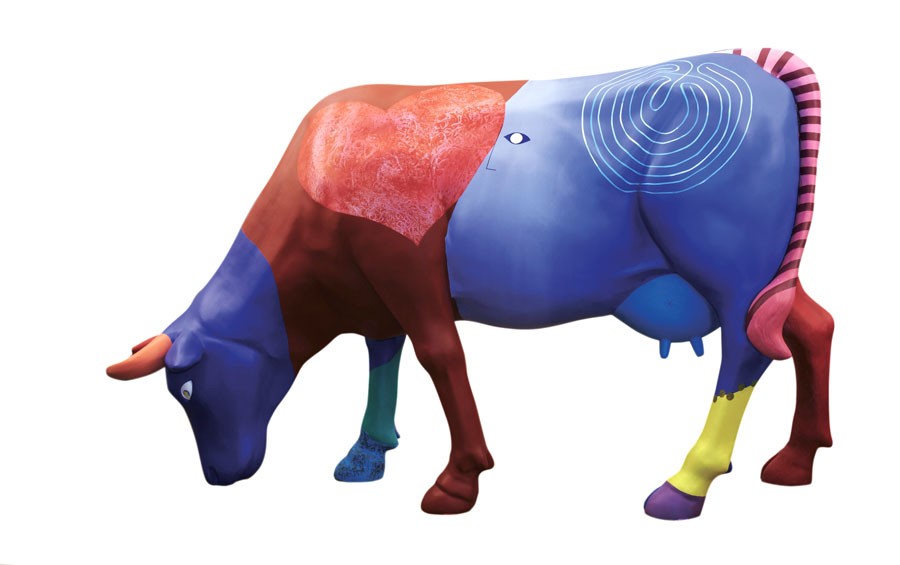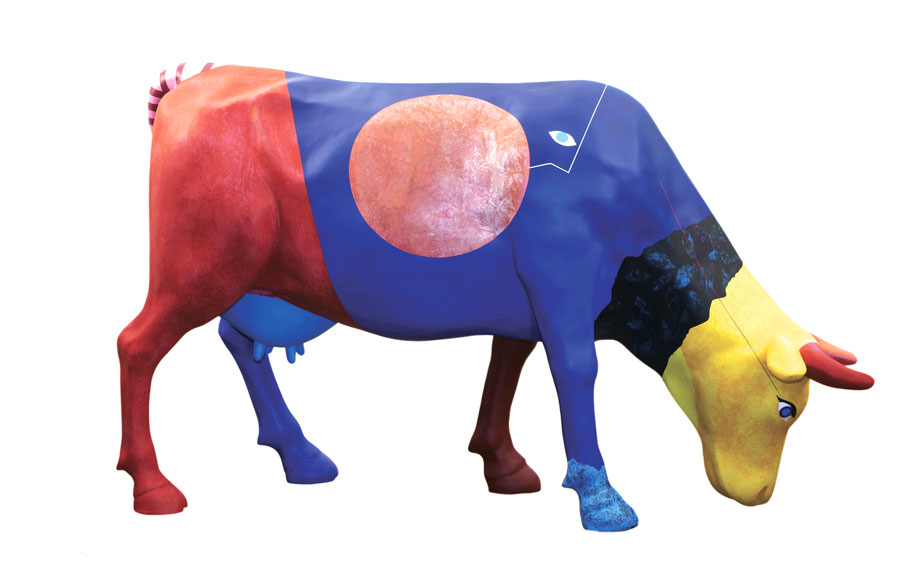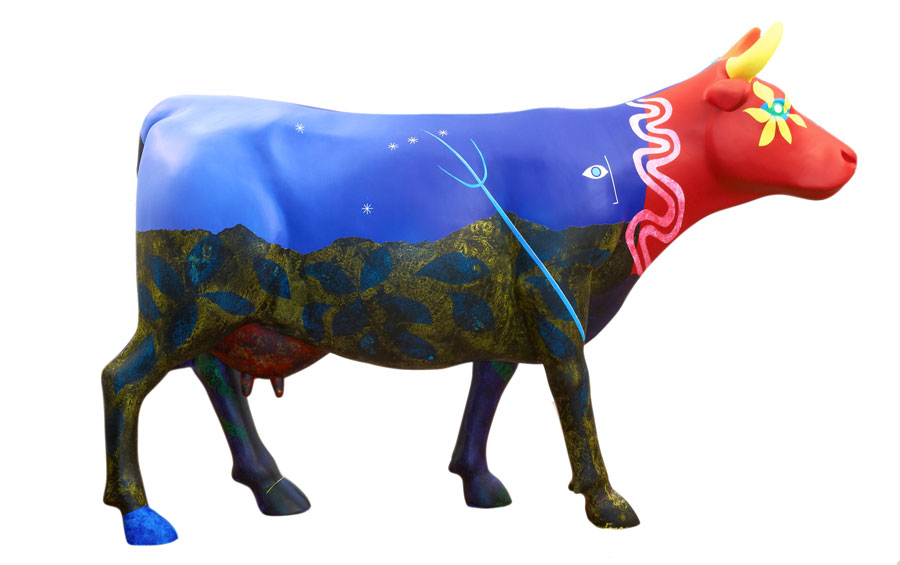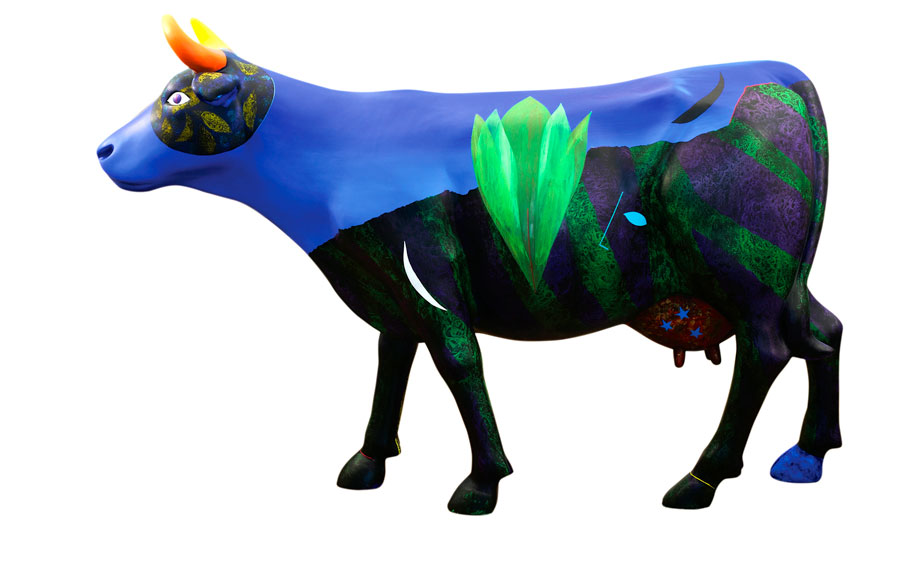THE SACRED COWS
LE RELAIS DE LA POSTE
MAGESCQ
A few years ago, my friends Annik and Jean Coussau spoke to me of their wish to have two paintings of cows for their beautiful establishment "Le Relais de la Poste" in Magescq – a Relais-Château with an exceptional cuisine that is a haven of peace. At the time I was deeply involved with the "Time for Peace Film & Music Awards" and had temporarily stopped painting. Moreover, I was living in the United States.
Now, as a symbol of my return to France and to my artistic activities, it seems obvious to me that this would be the year in which I ought to create these two cows. I did not intend to simply produce cow shapes as they are so often seen in the world but, rather, to truly create two art works whose content would be mythical while living up to the joy and the celebrations associated with the pleasures so perfectly in line with the atmosphere of the "Relais de la Poste" where they would find a home. Their realization was well within the scope of my new artistic practice.
For the concept of the two "sacred cows" I found my inspiration in ancient personages in whom two civilizations, namely that of Greece and Egypt, are juxtaposed. The first of these characters is Pasiphaë, which in ancient Greek means "She who shines for everyone," a classical epithet of the Moon goddess. Pasiphaë is the wife of Minos, King of Crete, and is described as an immortal or a magician. The legend says that one day her husband Minos had begged Poseidon, the god of the oceans and seas, to give him a magnificent animal that he would then sacrifice to him. In answer to his prayer Poseidon had a splendid white bull emerge from the waves, which Minos found so beautiful that he decided to spare the animal, even if it meant tricking the god, and in its place sacrifice a different one. Enraged by Minos' attitude, Poseidon turned the bull into a raging wild beast that destroyed all of Crete.
At the same time Aphrodite had caused Pasiphaë to fall madly in love with the animal and asked Daedalus to build her a hollow statue of a cow. She was to get inside it and thus mate with the bull. Needless to say, the cow had to be superb to succeed in fooling the bull. Plato mentions that the statues of Daedalus were strikingly realistic and that, according to the legend, they had to be chained down to prevent them from fleeing. After coupling with the white bull Pasiphaë gave birth to the Minotaur. Following this episode Minos had the labyrinth constructed to fence in the Minotaur. One of the sides of some pieces from ancient Crete shows an image of this labyrinth, expressing good fortune.
I changed the story around and had the Egyptian goddess Hathor be the one to bewitch Pasiphaë instead of Aphrodite. Hathor, goddess of celebration, love, and joy is represented as either a cow or a woman carrying a solar disk between her horns. It seemed to me to flow from the true source, since the Greeks identified Hathor with their goddess Aphrodite. Hathor is equally linked to the Milky Way, and the four feet of the celestial cow can be seen as the pillars on which the sky rests. Thus, it seemed perfectly normal to me that Pasiphaë would have been inspired by Hathor to hide inside a cow and instill love, celebration, and joy in the bull. Hence these two sacred cows, who organize themselves around Love, Joy, and Celebration, thereby linking all of the symbolism of these two ancient characters to that of the "Relais de la Poste."
Robert Einbeck – October 2013



